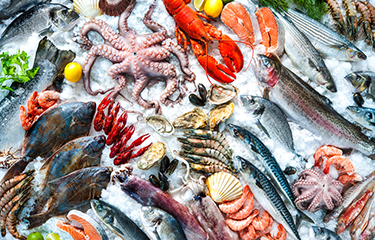Soaring demand and an expanding supply of fishery and aquaculture products have led seafood to be one of the most traded food categories in the world today. Thanks to globalization, increased product specialization, longer and more complex supply chains, and a broadening of consumer tastes, concerns and expectations, there’s little chance of a reverse in this trend, but the likelihood is that future growth rates will fail to replicate the scale seen in recent decades.
According to the Food and Agriculture Organization of the United Nations (FAO), approximately 35 percent of global fish production entered international trade in various forms for human consumption or non-edible purposes in 2016. The 60 million metric tons (MT) (live weight equivalent) of total products exported that year represented a 245 percent increase over 1976, and this increase was more than 514 percent if only the trade in seafood for human consumption is considered.
Over the same 40-year period, the world trade in these products also grew significantly in value terms – from USD 8 billion (EUR 7 billion) to USD 143 billion (EUR 125.2 billion), or 8 percent per annum, with the rate of growth of exports from developing countries rising significantly faster than the exports from developed countries. This overall value now represents more than 9 percent of total agricultural exports and 1 percent of the world merchandise trade.
The FAO cites the contribution that regional trade agreements have made to this growth through the increased regionalization of fish trade since the 1990s, with regional trade flows increasing faster than external trade flows. To emphasize this trend, it highlights that in 2016, the trade increased by 7 percent over the year before, and in 2017 economic growth strengthened demand and lifted prices, again increasing the value of global fish exports by about 7 percent to peak at an estimated USD 152 billion (EUR 133 billion).
China is the main fish producer and since 2002 has also been the largest exporter of fish and fish products, although the rapid growth it experienced in the 1990s and 2000s has subsequently slowed, with Chinese seafood exports reaching a level of USD 20.5 billion (EUR 17.9 billion) in 2017, up just 2 percent compared with the year before. After China, the major exporters are Norway (USD 11.7 billion/EUR 10.2 billion in 2016) and Vietnam (USD 7.3 billion/ EUR 6.4 billion).
The E.U. represents the largest single market for fish and fish products, followed by the United States and Japan; in 2016 these three markets together accounted for approximately 64 percent of the total value of world imports of fish and fish products. Over the course of 2016 and 2017, fish imports grew in all three markets as a result of strengthened economic fundamentals.
The seafood trade is characterized by a broad diversity of products. High-value species such as shrimp, salmon, tuna, groundfish, flatfish, seabass and seabream are highly traded, particularly toward more prosperous markets. At the same time, low-value species such as small pelagics are also traded in large quantities and mainly exported to low-income consumers in developing countries. However, the FAO points to growing imports of higher value species by developing regions for domestic consumption.
In terms of species, the trade in salmon has increased at an average of 10 percent per year in value terms since 1976, and since 2013, it has been the largest single fish commodity by value. This growth has been partially driven by rising incomes and urbanization in emerging markets, particularly in East and Southeast Asia. But salmon has also retained a large and growing consumer base in large developed markets, including the E.U., United States, and Japan. Most salmon consumed today comes from aquaculture, supplied by the likes of Norway and Chile, although various wild Pacific salmon species are also traded internationally in significant quantities.
Shrimp are also heavily traded commodities and represent the second main group of exported species in value terms. Countries in Latin America and East and Southeast Asia account for by far the major share of production, but a large proportion of consumption takes place in developed markets.
Meanwhile, the whitefish market segment, which historically has been dominated by wild-capture species such as cod and Alaska pollock, is now increasingly shared with lower-priced farmed species such as pangasius and tilapia, mainly produced in Vietnam and China respectively. Both these species have gained strong market shares in the United States.
Looking ahead, it is projected that about 31 percent of total fishery and aquaculture production will be exported in 2030 (38 percent if trade within the E.U. is included). In volume terms, the world trade for human consumption is expected to grow by 24 percent in the projection period to reach more than 48 million MT (60.6 million MT if trade within the E.U. is included). However, the annual rate of export growth is expected to decrease from a level of 2.3 percent for 2003-2016 to 1.5 percent for 2017-2030. This reduction, forecasts the FAO, will be partly owing to increasing prices, slower growth of fish production and stronger domestic demand in some of the main exporting countries.
It believes that China will continue to be the major exporter of fish for human consumption (followed by Vietnam and Norway), with its share of total fish exports remaining at 20 percent. The bulk of the fish export growth is projected to originate from Asian countries, with the region accounting for about 51 percent of the additional exports by 2030. Meanwhile, Asia’s share in total trade for fish consumption will remain at 50 percent in 2030.
Advanced economies are expected to remain highly dependent on imports to meet their domestic demand. Consequently, the E.U., Japan and the United States will account for 43 percent of total imports for food fish consumption, down from 44 percent in 2016.







